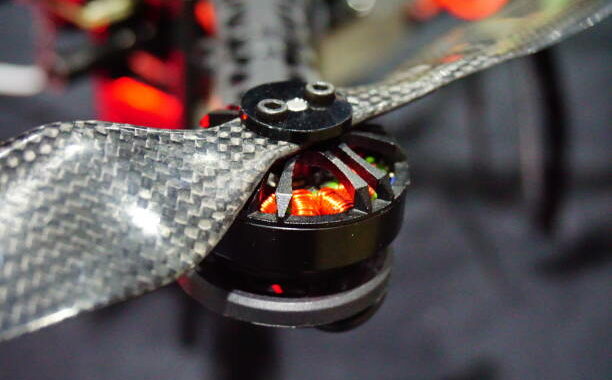Exploring Drone Motors: Their Types and Applications
Drones, or unmanned aerial vehicles (UAVs), have revolutionized various industries with their versatility and capability. A key component that determines a drone’s performance, efficiency, and functionality is its motor. Understanding the different types of motors used in drones and their specific applications can help in choosing the right one for your needs. Here’s a comprehensive guide on the types of drone motors and their uses.
Types of Drone Motors
1. Brushed Motors
Overview:
Brushed motors are one of the oldest types of motors used in drones. They operate by using brushes to deliver current to the motor windings through a commutator.
Advantages:
– Cost-Effective: Generally cheaper than brushless motors.
– Simplicity: Easier to control and use with basic electronic speed controllers (ESCs).
Disadvantages:
– Wear and Tear: Brushes wear out over time, requiring regular maintenance.
– Less Efficient: Generate more heat and have lower efficiency compared to brushless motors.
Applications:
– Toy Drones: Ideal for small, entry-level drones where cost is a major consideration.
– Short-Term Use: Suitable for applications where the drone is not intended for prolonged or intensive use.
2. Brushless Motors
Overview:
Brushless motors are more advanced and do not use brushes. They rely on an electronic controller to switch the phases to the windings, making them more efficient and durable.
Advantages:
– High Efficiency: Less energy loss due to friction and heat.
– Durability: No brushes to wear out, resulting in longer lifespan.
– Performance: Higher power output and better speed control.
Disadvantages:
– Cost: More expensive than brushed motors.
– Complexity: Requires more sophisticated ESCs and control systems.
Applications:
– Consumer Drones: Commonly used in recreational drones for their balance of cost and performance.
– Professional Drones: Essential for drones used in filming, surveying, and other professional applications due to their reliability and power.
– Racing Drones: Preferred in racing drones for their high performance and quick response times.
Motor Specifications and Their Impact
1. KV Rating
Definition:
KV rating indicates the number of revolutions per minute (RPM) a motor will turn when 1 volt is applied with no load.
Impact:
– High KV Motors: Provide more RPM and are suitable for lightweight, fast-flying drones.
– Low KV Motors: Provide more torque and are ideal for heavy-lift drones and applications requiring stability.
2. Motor Size and Weight
Impact:
– Smaller Motors: Used in lightweight drones where agility and fast movements are required.
– Larger Motors: Suitable for heavy-lift drones where carrying capacity and stability are crucial.
Motor Applications in Various Drone Types
1. Quadcopters
Quadcopters typically use brushless motors due to their need for balanced performance and efficiency. The choice of motor depends on the drone’s intended use, whether for leisure, photography, or racing.
2. Hexacopters and Octocopters
These drones, designed for heavier payloads and greater stability, use low KV brushless motors. The additional rotors provide redundancy, making them suitable for professional applications such as aerial photography, surveying, and delivery services.
3. Fixed-Wing Drones
Fixed-wing drones often use a combination of brushed and brushless motors. Brushless motors are preferred for their efficiency and ability to provide sustained power for longer flights, which is crucial in mapping and surveillance tasks.
4. FPV (First-Person View) Racing Drones
Racing drones prioritize speed and agility, hence high KV brushless motors are commonly used. These motors allow for rapid acceleration and quick directional changes, essential for competitive drone racing.
Conclusion
Choosing the right motor for your drone is crucial for optimizing its performance and achieving desired outcomes. Whether you are flying a simple toy drone or a professional-grade UAV, understanding the differences between brushed and brushless motors, and their specific applications, will help you make informed decisions. As drone technology continues to evolve, staying updated on motor advancements will ensure that your drone remains efficient, powerful, and suited to your needs.
Author


